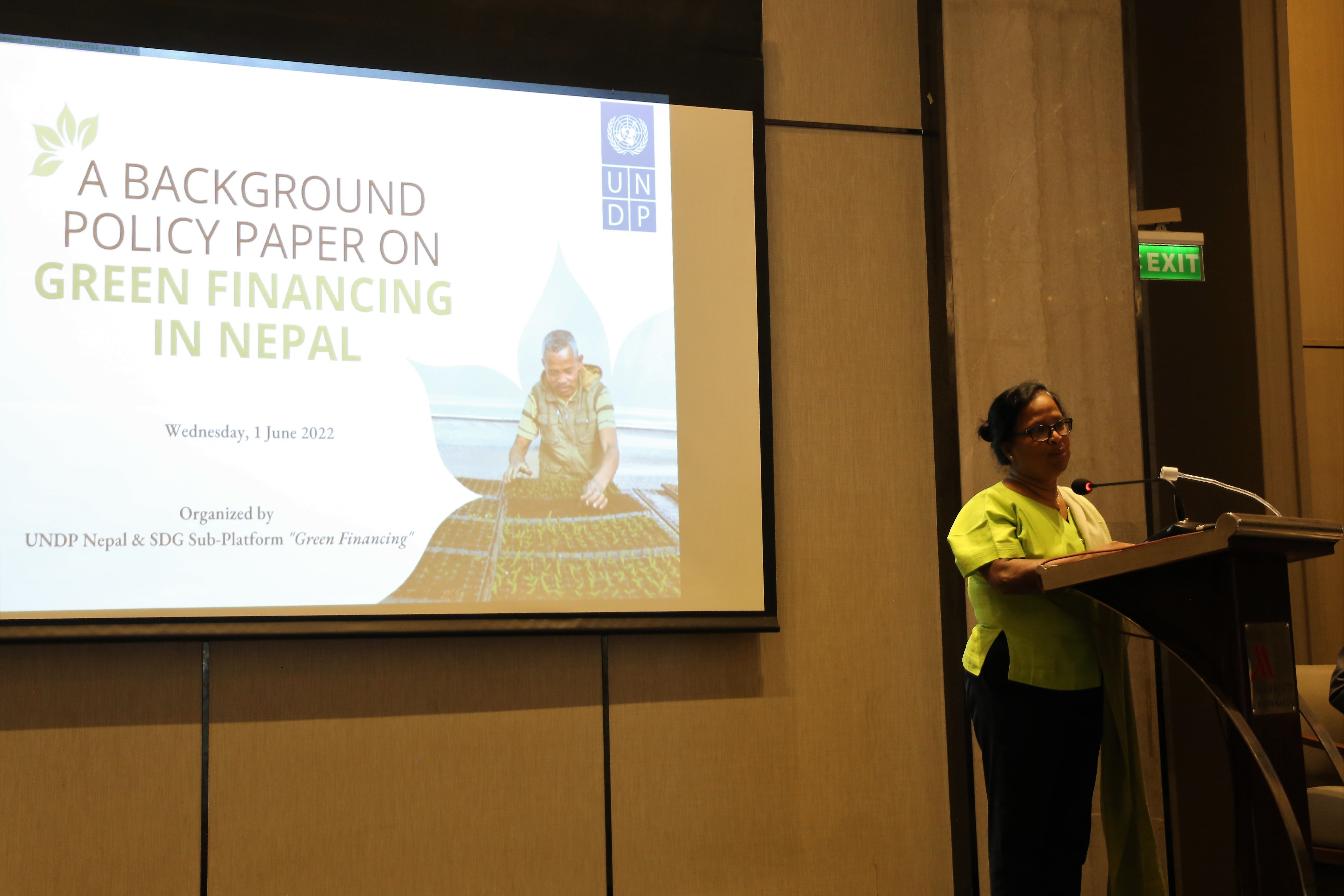Making green financing benefit the people in need in Nepal
July 21, 2022
The Sustainable Development Goals (SDGs) have an ambitious agenda for Nepal, with 17 goals, 169 targets, and 479 indicators. But with just eight years left to meet the deadline for the SDGs, a pressing question before Nepal remains, how to make sure SDG financing becomes a reality.
We know that there is a gap of around US$ 6 billion in SDG financing for Nepal, half of which is expected to come from the private sector. At the beginning of 2020, we looked to set up thematic platforms around SDGs and as such, established five such sub-platforms on green financing, responsible supply, resilient cities, resilient infrastructure, and policy coherence.
Now, we are looking at the risks, opportunities, and benefits for the people from green financing. We also need to build accountability into effective green financing. When we talk about green financing, we are looking at how it will contribute to achieving the SDGs. This is why I think it's important to have a regulatory framework for the banking system or the private sector to work on green financing. But it is also equally important to clarify our own roles as citizens and as people. What sacrifices, lifestyles and behavioural changes do we need to adopt in order to promote green financing for sustainable development, particularly in the post-COVID context? That is what UNDP will be looking into while observing what's happening in the region, including in the neighbouring countries.
Currently, given the post-COVID macro-economic instability, fuel price hikes, increasing demands for energy, changing agriculture productivity, and disruptions to food supply chains, what are we supposed to do? The federal budget was just presented a few days ago. We know it is agriculture heavy and that there is a great drive to eat local, go local, invest local, and produce local. This is all in line with the SDGs, as SDG financing can definitely bring about the required investment tools, encouragement, and insurance to people, particularly the youth, who would like to follow the road of sustainability.

UNDP RR Ayshanie Medagangoda-Labe addressing at the launch of the report, Background Policy Paper on Green Financing in Nepal, on 1 June 2022 in Kathmandu.
During a conversation with my Nepali colleague, he told me, “All of us are now planting and eating hybrid rice varieties like chhabish and atthaish. But we should go back to local varieties like Pokhareli, Tychin and Khumal rice.” These types of rice varieties are disappearing in the country, he said. But if people want to invest in these Pokhareli and Tychin varieties, what kind of support or incentives can the finance sector provide? Financing could come in the form of investment or insurance that also provides opportunities to protect the grain.
This is where everything must come together, linking analytics and data with people who know how different issues interconnect. This means to work together and to speak with different ministries, the private sector, public sector, and cooperative sector. Lest we forget, the cooperative sector is responsible for 4 percent of SDG financing and so, requires real efforts to bring them on board the entire financing process.
Green financing also calls for analyses of climate risks and benefits that will help us understand how individuals are affected differently by climate risks and thus benefit differently from climate adaptation. That means bringing in a gender perspective, particularly in sectors like agriculture, tourism, and manufacturing. Taking into consideration the role of women and different communities is an investment in productivity. But effectively including women and different communities will require differentiated targeting, which is something the banks can effectively cooperate on.
Nepal has a lot of ambition going forward, including in areas like increasing forest cover and promoting carbon neutrality, as promised at Glasgow last year. I think the opportunities to bring all of these elements together are galore.
In this context, I would like to reiterate UNDP’s continued support. However, as this is not a sector that UNDP can do everything alone, we need the support of other UN agencies, particularly the UN Capital Development Fund (UNCDF). The UNCDF has special mandates on green financing as well as on engaging the private sector, with whom we are already working. We stand ready to support the work that the government is already doing with the banks to make sure that green financing is reaching out to the people in need.
(This is an excerpt from Ayshanie Medagangoda-Labe’s address at the launch of the report, Background Policy Paper on Green Financing in Nepal, on 1 June 2022 in Kathmandu).

 Locations
Locations